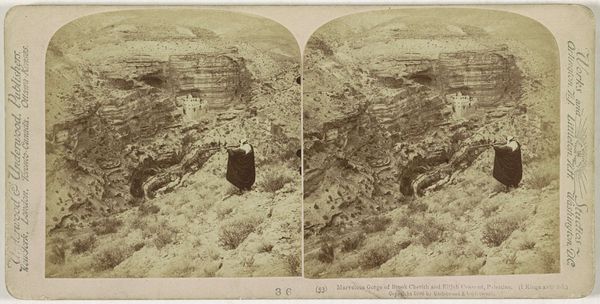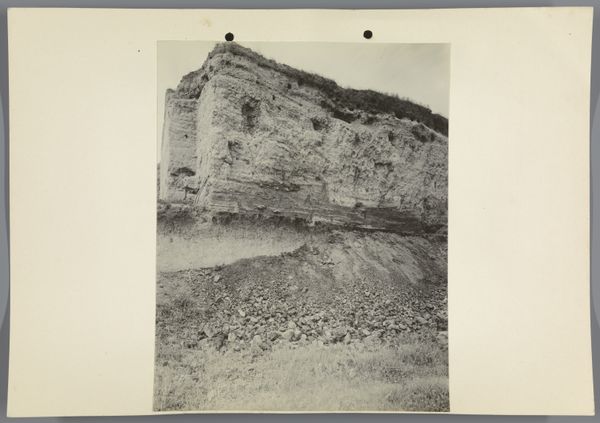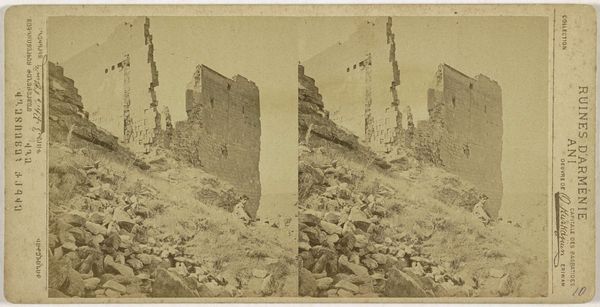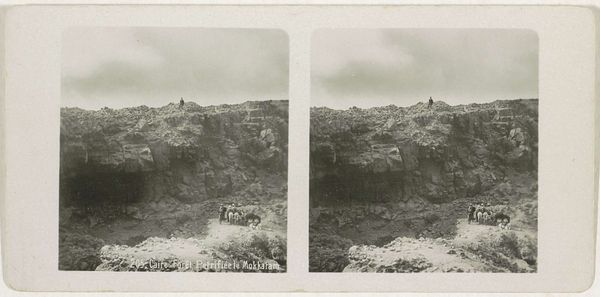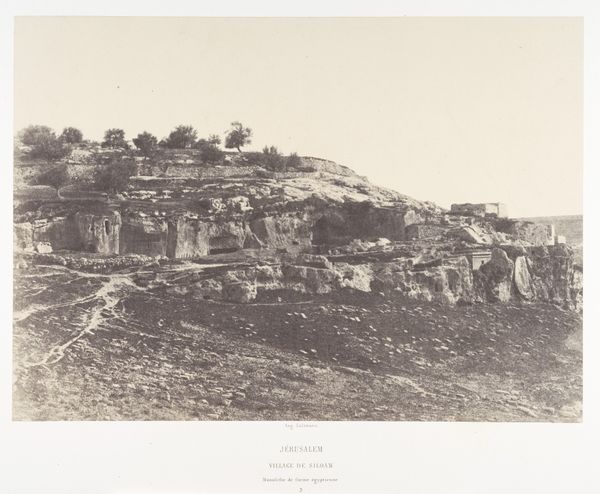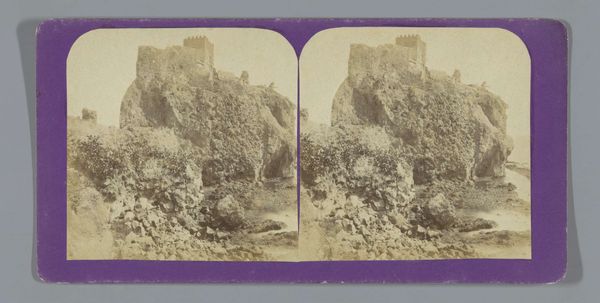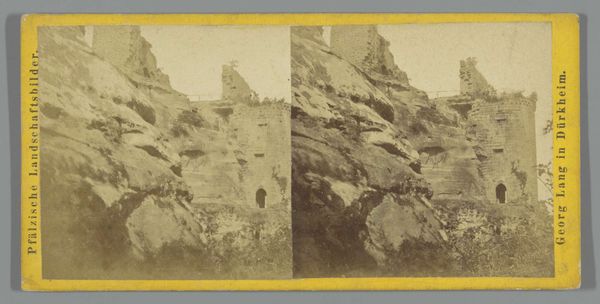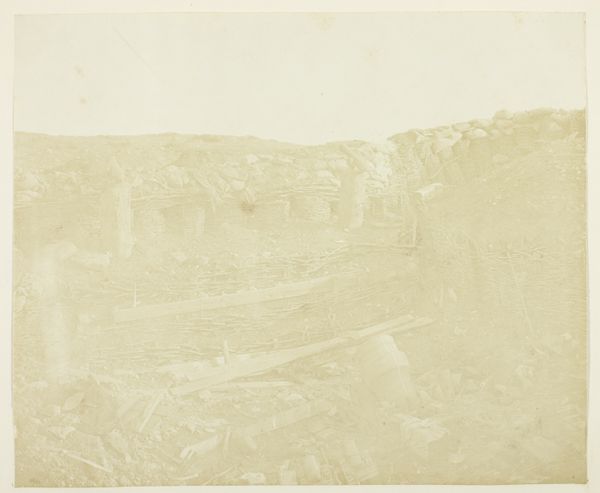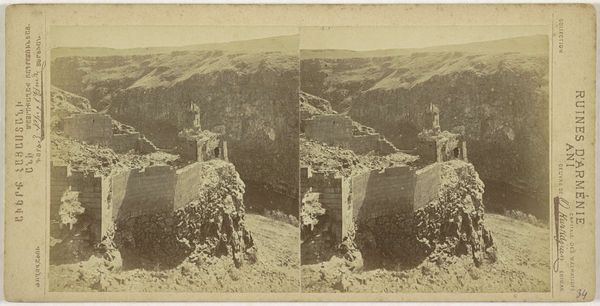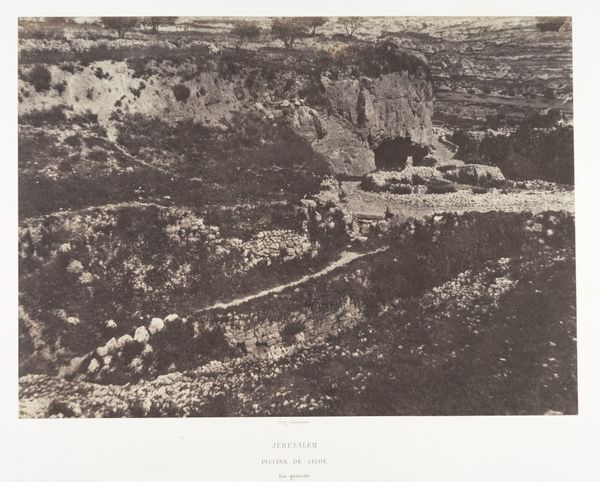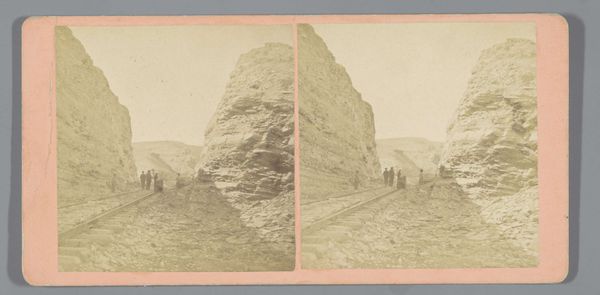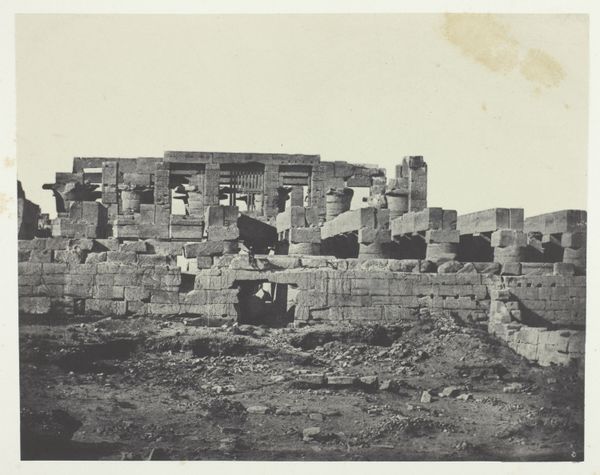
Dimensions: height 83 mm, width 169 mm
Copyright: Rijks Museum: Open Domain
Editor: So, this is Hermann Selle's "Ruïne van kasteel Regenstein, nabij Blankenburg," dating from 1866 to 1870. It looks like a photographic print. The ruins have such a strong presence; it almost feels like the landscape itself is consuming them. What stands out to you when you look at this piece? Curator: I'm drawn to the process itself. Consider the labor involved in creating a daguerreotype at this time. It's not simply about capturing an image; it's about the alchemical processes, the darkroom work, the skilled hand in sensitizing the plate. Think about the accessibility of photography then versus painting, the democratization, so to speak, of image making, as well as the specific labour to take and produce such image, from preparation, traveling, the act, printing... How do these factors impact our understanding of landscape art during this era? Editor: That's interesting. I hadn't really thought about the democratization of image-making playing into landscape art itself. It’s so tied to Romanticism, that I had tunnel vision. Curator: Exactly! This is a shift in material possibilities. It’s no longer solely about a patron commissioning an artist and all the steps this traditional workflow implied, it’s also about mass production via a machine that relies on physical/chemical material reactions. This piece speaks to that pivotal point, how the means of production change our very perception of nature and who can participate in representing it. Selle is not simply depicting ruins; he is employing new technologies, transforming access, expanding markets and potentially creating new understandings about who controls which type of creative product. It changes who controls production! Editor: So, seeing this through the lens of material production really reframes my perspective, it makes the "how" of the image just as important as the "what". Thank you! Curator: Indeed. Examining the materials and methods allows us to understand the shift in power dynamics that accompanies new technologies, a relevant inquiry, then and now!
Comments
No comments
Be the first to comment and join the conversation on the ultimate creative platform.
